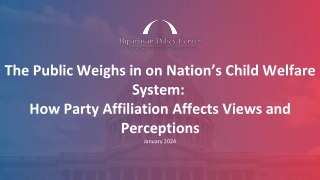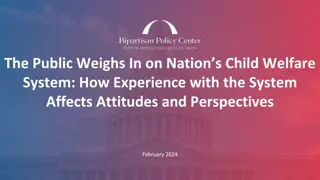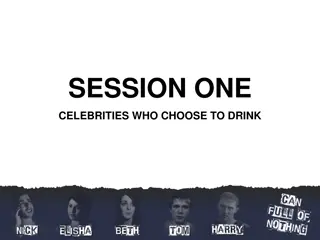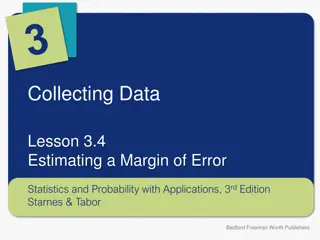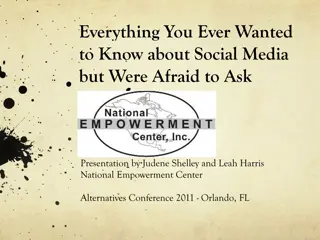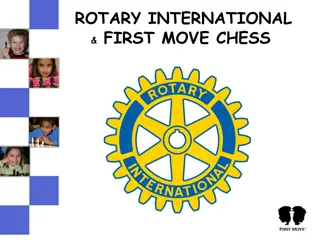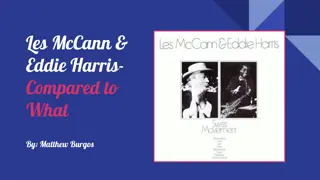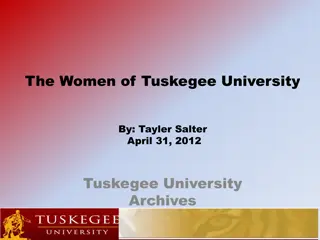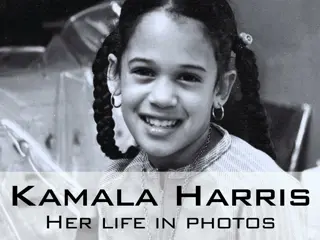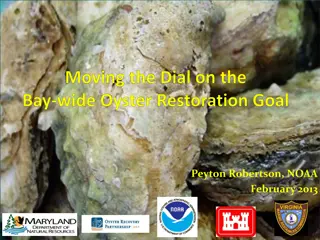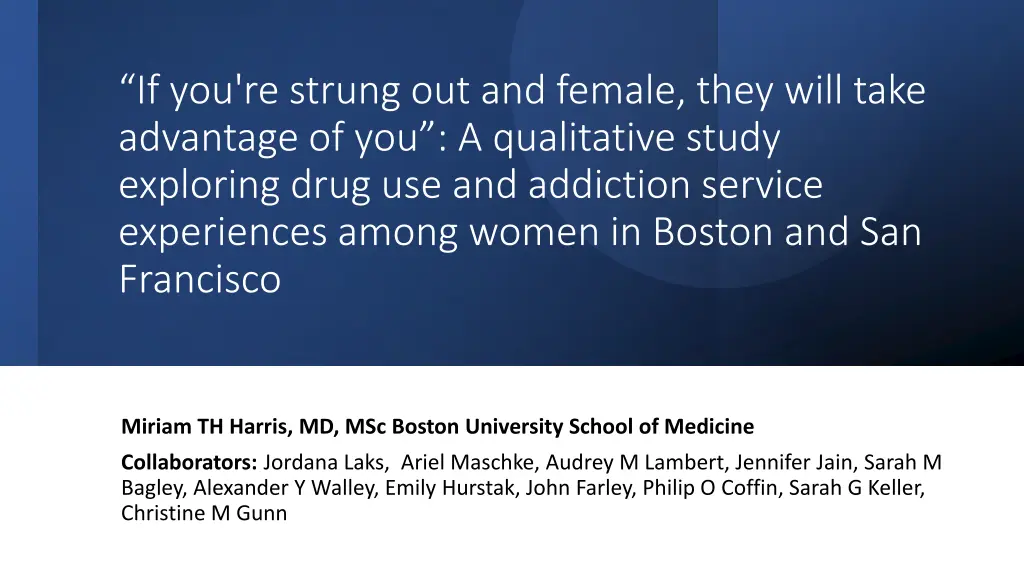
Exploring Drug Use and Addiction Services Among Women in Boston and San Francisco
This qualitative study delves into the experiences of women in Boston and San Francisco regarding drug use, addiction services, and the challenges they face. The research highlights the need for gender-specific approaches in addressing drug harms and improving treatment services for women.
Download Presentation

Please find below an Image/Link to download the presentation.
The content on the website is provided AS IS for your information and personal use only. It may not be sold, licensed, or shared on other websites without obtaining consent from the author. If you encounter any issues during the download, it is possible that the publisher has removed the file from their server.
You are allowed to download the files provided on this website for personal or commercial use, subject to the condition that they are used lawfully. All files are the property of their respective owners.
The content on the website is provided AS IS for your information and personal use only. It may not be sold, licensed, or shared on other websites without obtaining consent from the author.
E N D
Presentation Transcript
If you're strung out and female, they will take advantage of you : A qualitative study exploring drug use and addiction service experiences among women in Boston and San Francisco Miriam TH Harris, MD, MSc Boston University School of Medicine Collaborators: Jordana Laks, Ariel Maschke, Audrey M Lambert, Jennifer Jain, Sarah M Bagley, Alexander Y Walley, Emily Hurstak, John Farley, Philip O Coffin, Sarah G Keller, Christine M Gunn
I (Miriam Harris) have no commercial conflicts of interest to disclose This research was supported by NIDA-ORWH grant supplement mechanism (R01DA045690-02S1) to REBOOT (Coffin, 2019, NCT03838510). My work was supported by International Collaborative Addiction Medicine Research Fellowship (NIH-NIDA R25-DA037756-Fairburn)
Land Acknowledgement Land Acknowledgement I respectfully acknowledge that the land where I work, live, teach, learn, and gather, is the traditional territory of the Massachusett and their neighbors, the Wampanoag and Nipmuc Peoples, who have stewarded this land for hundreds of generations, and continue to do so today. Context Harmful medical practice (from settlers) have long been and continue to be a source of pain, betrayal, and disrespect in Indigenous communities Indigenous communities have long resisted their exploitation through research in medicine
Defining terms: Sex vs Gender Sex: the biological classification of a human as male or female based on their physical and physiological attributes Gender: socially constructed roles and behaviors that vary across societies and change over time Internal sense of being a woman, man, or anywhere on the gender spectrum Transgender Non-binary Genderqueer identities Government of Canada. CI of HR. 2014. LGBT Resource Center. 2021.
Background: Importance of gender Gender gap in addiction is narrowing Women experience disproportionate drug-harms & have greater unmet treatment needs Addiction services, research, & polices have been designed using a gender-neutral approach Meyer JP, et al. Drug Alcohol Depend. 2019 Keyes KM, et al. Drug Alcohol Depend. 2008 Cicero TJ et al. JAMA Psychiatry. 2014
Intersectionality Hankivsky O, et lal. Soc Sci Med. 2012 American Civil Liberties Union, 2021.
Objective Using an intersectional framework: Objective 1: examined how identifying as a woman impacted drug use and addiction service experiences Objective 2: examined how identifying as a woman impacted addiction service preferences
Methods Setting and participants: data were derived from a two-stie qualitative studyset in Boston & San Francisco in 2020, participants included self- identified women, age >18 years, with illicit opioid use in the past 14 days
Analysis A code book was developed using a deductive approach based on intersectionality theory and allowed for emergent (inductive) codes to be added around drug use and treatment service experiences Grounded content analysis was used to analyze codes and develop summary themes Logie et al., PLOS Medicine, 2011 Corbin and Strauss, Sage Publication 2014
Results: Participant Characteristics 36 women were included Median age was 49 (IQR 34-52) Race: 58% White, 16% Black, 14% multiracial, 12% were another race Ethnicity: 14% Hispanic 58% were stably housed Past 30-day substance use: 78% heroin/fentanyl, 75% benzodiazepines, 56% cocaine, 50% methamphetamine
Theme 1: The intersection of gender, drug use, and sex work identities magnified experiences of oppression among women It's just hard, period. I mean, imagine a woman that doesn't do drugs getting through the world, you take stuff like that, and you add a million on top of that, and that's what it's like [for women who uses drugs]. (Darlene, <30 yrs, San Francisco) As my addiction progressed, I turned to prostitution. I was on the street. I was actually held hostage by a drug dealer. You're just an object that someone used to make a profit. I feel like I'm a human statistic and stigmatized. (Tamera, >30-year-old, Boston)
Theme 2: Women perceived that addiction service settings structurally favoured men Bed availability Women s physical needs [Detoxification facilities] are the same thing as jail. Jail was meant for men, there's not a lot of support for women. Girls have to worry about things like periods or pregnancies... I think it's harder for [treatment services] to deal with things like that so they gravitate towards males. There always seems to be more male beds available [in like] detoxes and stuff. The [men] have more sober houses and halfway houses, a lot of them are just for men. (Madilynn, <30 years old, Boston) (Camille, <30 years old, Boston)
Theme 3: Gender-based violence occurred in addiction service settings and perpetuated cycles of trauma I know a lot of females that have doctors proposition them because they think that because you do dope, you're automatically a prostitute it's still even hard for me to go to the doctor I don't think it's cool because we have all these other things coming at us. We also got to have the doctors?... Where is the line drawn? (Darlene, >30, San Francisco)
Theme 4: Addiction services that were safe and responsive to women s specific needs were valued and desired by women Safe programs Addressing women s needs Being together as females and talking and about our issues, like domestic violence, drug abuse. And what other women have been through like having kids taken away. I can relate to them because I've been through it. On Saturday they have a Her Saturday. You go in, you get clothes, tampons, boots in the winter, coats. Clothes, shoes, socks, underwear, feminine products [the basics], you know. (Jacinda, >30 years old, Boston) (Nina, >30 years old, San Francisco)
Summary Gender intersected drug use & sex work identities to exacerbate experiences of oppression in drug use and addiction-related service settings Physical, sexual, and psychological violence were ubiquitous in drug use environments and persisted in addiction-related services Violence perpetuated cycles of trauma and exacerbated barriers to care Addiction-related services that facilitated connections between women, were perceived as safe, and addressed women s specific needs were valued and sought after
Limitations Study sample and approach mitigated exploring the impact of key racial, ethnic, trans- or queer- gender, and sexual orientation intersectional identities Data derived from two distinct geographic regions Data provides a snapshot of experiences
Conclusions Policies must shift away from criminalization towards trauma-informed addiction treatment approaches Addiction-related services must examine policies, procedures, and cultures that maybe contributing violence against women and other marginalized populations using such services Findings strengthen calls for the development, implementation, and investment in gender-responsive addiction services
Acknowledgments We would like to acknowledge of all of the women who participated and shared their time, knowledge, and experiences as interview participants. We would like to thank NIH/ORWH for funding this study (R01DA045690-02S1)

